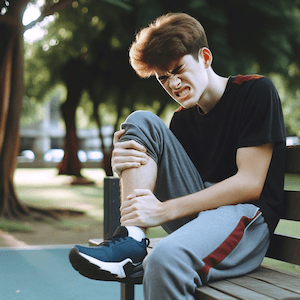Addressing Growing Pains for Adolescents
A Guide to Relief During Growth Spurts

Introduction
Growing pains are a common concern among adolescents in Australia. While often dismissed as a normal part of growing up, these pains can be effectively managed with the right care.
What are Growing Pains?
Growing pains, first identified in 1823 by French physician Marcel Duchamp, are the leading cause of musculoskeletal pain in early childhood. Despite extensive research, their exact cause remains unknown. However, several theories suggest that rapid bone growth outpaces muscle lengthening, leading to increased musculoskeletal tension and discomfort.
Identifying Growing Pains
Growing pains typically occur during periods of rapid bone growth in adolescence. They often arise from inadequate muscle lengthening, causing increased tension and discomfort. These pains usually affect the legs, particularly the calves, thighs, and behind the knees.
The Role of Physiotherapy
Physiotherapists play a crucial role in assessing and treating growing pains. They use tailored techniques to improve muscle flexibility and reduce tension. Treatment plans vary depending on each child’s unique needs, focusing on exercises and stretches that promote muscle balance and relieve discomfort.
Common Growth-Related Conditions
Growing pains can sometimes be confused with other growth-related conditions. Some common conditions include:
- Severs Disease: Causes heel pain due to inflammation of the growth plate in the heel.
- Osgood-Schlatter Disease: Leads to knee pain caused by inflammation of the area below the kneecap.
- Sinding-Larsen-Johansson Syndrome: Another cause of knee pain, affecting the lower part of the kneecap.
Lifestyle Adjustments
Adolescents can manage growing pains with simple lifestyle changes. Regular stretching, maintaining good posture, and a balanced diet are crucial. Staying hydrated and ensuring adequate rest also contribute to reducing discomfort.
Anticipating Positive Outcomes
Most growing pains resolve within days to weeks with appropriate treatment. Untreated pains, however, can persist much longer, potentially leading to more significant issues. Early intervention by a physiotherapist can prevent long-term discomfort.
What to Do?
Parents should consult a physiotherapist if their child experiences persistent or severe growing pains. Treatment plans are personalised, focusing on exercises and stretches suitable for each individual. Physiotherapists can also provide advice on lifestyle adjustments to support the child’s overall health.











































































